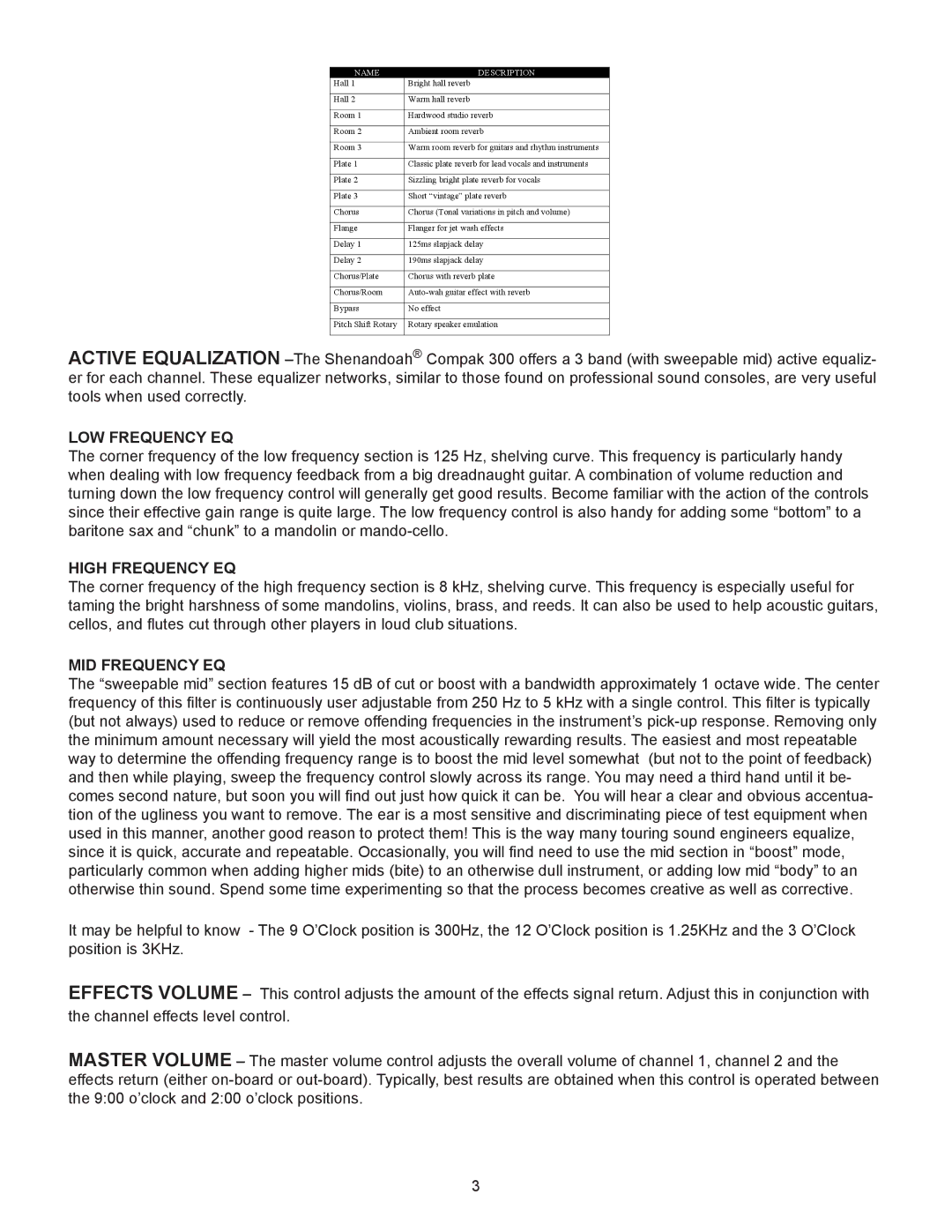
NAME | DESCRIPTION |
Hall 1 | Bright hall reverb |
Hall 2 | Warm hall reverb |
Room 1 | Hardwood studio reverb |
Room 2 | Ambient room reverb |
Room 3 | Warm room reverb for guitars and rhythm instruments |
Plate 1 | Classic plate reverb for lead vocals and instruments |
Plate 2 | Sizzling bright plate reverb for vocals |
Plate 3 | Short “vintage” plate reverb |
Chorus | Chorus (Tonal variations in pitch and volume) |
Flange | Flanger for jet wash effects |
Delay 1 | 125ms slapjack delay |
Delay 2 | 190ms slapjack delay |
Chorus/Plate | Chorus with reverb plate |
Chorus/Room | |
Bypass | No effect |
Pitch Shift Rotary | Rotary speaker emulation |
ACTIVE EQUALIZATION
LOW FREQUENCY EQ
The corner frequency of the low frequency section is 125 Hz, shelving curve. This frequency is particularly handy when dealing with low frequency feedback from a big dreadnaught guitar. A combination of volume reduction and turning down the low frequency control will generally get good results. Become familiar with the action of the controls since their effective gain range is quite large. The low frequency control is also handy for adding some “bottom” to a baritone sax and “chunk” to a mandolin or
HIGH FREQUENCY EQ
The corner frequency of the high frequency section is 8 kHz, shelving curve. This frequency is especially useful for taming the bright harshness of some mandolins, violins, brass, and reeds. It can also be used to help acoustic guitars, cellos, and flutes cut through other players in loud club situations.
MID FREQUENCY EQ
The “sweepable mid” section features 15 dB of cut or boost with a bandwidth approximately 1 octave wide. The center frequency of this filter is continuously user adjustable from 250 Hz to 5 kHz with a single control. This filter is typically (but not always) used to reduce or remove offending frequencies in the instrument’s
It may be helpful to know - The 9 O’Clock position is 300Hz, the 12 O’Clock position is 1.25KHz and the 3 O’Clock position is 3KHz.
EFFECTS VOLUME – This control adjusts the amount of the effects signal return. Adjust this in conjunction with the channel effects level control.
MASTER VOLUME – The master volume control adjusts the overall volume of channel 1, channel 2 and the effects return (either
